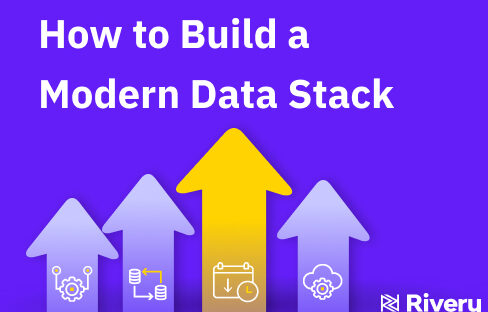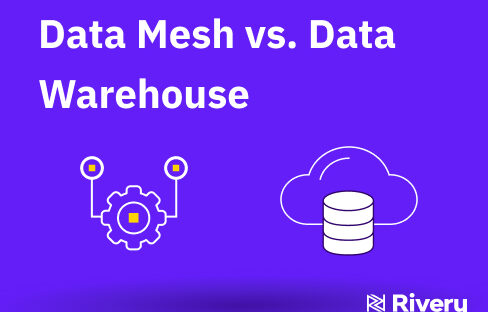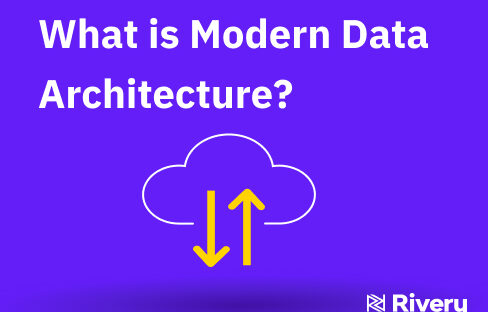Data is the lifeblood of any organization. Like a river, it flows, forks, merges, and evolves, powering insights and informing decisions along its journey. To navigate the intricate paths of data flows, organizations need to be able to track their data’s journey from source to insight. That’s where data lineage mapping comes in.
What is Data Lineage?
Data lineage involves tracking data from its source to its final destination. It follows the data journey through its various touchpoints and traces every transformation that’s happened along the way.
By tracing data lineage, organizations can determine where data came from, how it was transformed, and where it has been used. It helps to uncover gaps or errors, ensuring that we’re using accurate, up-to-date information. This knowledge can help organizations make better decisions, detect anomalies, and ensure compliance with data privacy regulations such as GDPR and CCPA.
Why does Data Lineage Matter?
Improving Decision-Making
Data lineage is vital for data-driven decision-making. Without it, organizations risk wasting valuable time and resources by piecing together an incomplete understanding of their data, leading to inaccurate conclusions.
Let’s illustrate this with an example: imagine a global e-commerce firm analyzing quarterly sales data. When inconsistencies arise in the reports, data lineage can trace the errors back to their origin, whether it’s a glitch in the data transformation process, inaccurate data input, or discrepancies in the source data itself.
A robust data lineage strategy is essential for data scientists, analysts, engineers, and architects as it:
- Enhances data quality, accuracy, and reliability.
- Facilitates impact analysis and understanding of data transformations.
- Enables root cause analysis for identifying issues and anomalies.
- Ensures regulatory compliance with data privacy regulations.
- Traces the origins and transformations of data in reports and analyses.
- Identifies areas for improvement in data management practices.
- Increases trust in the integrity of data.
- Supports informed decision-making based on reliable insights.
- Reduces the time and resources spent on investigating data inconsistencies.
- Promotes efficient resolution of data-related issues.
- Enhances overall data governance and management practices.
Compliance with Data Lineage Mapping Best Practice
Data lineage provides the necessary visibility and transparency to achieve compliance with industry regulations. For instance, GDPR requires organizations to demonstrate where and how they collect, store, process, and delete personal data. Data lineage helps identify the sources of customer data and its journey through various touchpoints before being deleted or archived, ensuring compliance with GDPR regulations.
Data lineage also helps establish a clear chain of custody and ownership, ensuring that authorized personnel can access the right data at the right time. This is especially important when data must remain secure and confidential.
This is where the role of data governance and compliance professionals comes in. They’re responsible for implementing policies, processes, and tools that help ensure seamless tracking of data lineage across the organization. Automation also plays an important role here, as it helps streamline the process of data discovery, mapping, analysis, and tracking.
Best Practices for Data Lineage Mapping
Implementing an effective data lineage strategy requires the right approach, tools, and personnel. Here are some best practices to help you get started:
Essential Data Lineage Mapping Best Practices
To ensure that your data lineage strategy is successful, it’s important to have a clear plan in place:
- Develop a data governance policy and lineage strategy that outlines responsibilities and documentation practices.
- Define roles and responsibilities related to data management.
- Set up protocols for managing and documenting changes to data sources.
- Establish policies governing data management, including access rules, usage guidelines, and update schedules.
Manage Roles & Responsibilities
- Assign Roles: Clearly define roles, responsibilities, and authorities in the data lineage process to maintain clarity and ensure accountability.
- Promote Cross-Functional Collaboration: Foster collaboration among departments to guarantee all data sources and transformations are accurately represented.
- Involve Key Stakeholders: Include key stakeholders from various departments to ensure a comprehensive view of all data sources and transformations.
- Invest in Training: Equip your team with the necessary skills and knowledge to effectively understand and use data lineage.
- Ensure Accessibility: Make your data lineage easily accessible and understandable for all relevant stakeholders.
Enforce Data Lineage Policies
Ensure that once policies and processes are in place, they are enforced. Compliance professionals can help verify that data is stored and managed according to the organization’s standards and regulations.
- Develop a Data Catalog: Begin by documenting all your data sources, including databases, APIs, and third-party data streams. This catalog will be the foundation of your data lineage.
- Document All Changes to Data Sources: Ensure a detailed record of all changes made to maintain an accurate reflection of the data’s history.
- Embrace Automation: Use automated data lineage tools to significantly decrease manual tracking and documentation of data flows.
- Continuous Audit and Update: Regularly review and update your data lineage to maintain its accuracy and keep it in line with any changes in the current data architecture.
- Establish a Formal Review Process: Set up a routine process to verify data accuracy regularly.
Invest in Lineage Tracking Tools
Utilize the variety of tools available to manage data lineage, including automated systems that track metadata changes in real time. These tools can be particularly helpful for archiving datasets and tracking their history over time.
Tools & Technologies for Data Lineage
The good news is that when it comes to data lineage tools, there are a wide variety of options available. From open-source solutions to enterprise-grade data lineage solutions, there’s something for every organization. Many of the leading tools allow you to track all types of data transformations, from ETL and SQL scripts to API calls and machine learning algorithms.
Data Lineage Mapping Tools Overview
Data lineage tools are software solutions designed to help track, visualize, and understand your data’s life cycle. They can provide an automated, real-time view of your data lineage, making it easier to see where your data is coming from, how it’s being transformed and used, and where it’s going.
Choosing the right tools and technologies is an integral part of maintaining robust data lineage. Here are some key categories:
- Metadata Management Solutions: These record all details of the data’s history, including source, changes, and the personnel involved in each step. Some tools in this category include Collibra, Apache Atlas, and Alation.
- Visualization Tools: Use these to create comprehensive lineage diagrams to track data across its lifecycle. Some tools in this category include Erwin Data Intelligence, Alteryx Connect, and Power BI.
- Data Quality and Profiling Tools: Use these to verify the accuracy and timeliness of data throughout its journey. Informatica Data Quality, Talend Data Quality, Trifacta Wrangler
Advanced-Data Lineage Mapping Tools
These tools go beyond just mapping and visualization. They integrate with a wide range of data sources, provide features for collaboration and reporting, support metadata management, and enable impact analysis.
- Some top tools in this category include IBM InfoSphere, Informatica Enterprise Data Catalog, and Talend Metadata Manager.
- Data Integration Platforms: Use these to track the movements of data between systems and prevent errors. Platforms: Rivery, Apache NFI, Snap Logic, MuleSoft Anypoint.
With these best practices and tools, you’re well-equipped to manage your data lineage effectively. Keep in mind that a well-implemented data lineage strategy doesn’t just improve data integrity but also supports informed decision-making, regulatory compliance, and overall organizational efficiency.
Optimizing Data Lineage
Data lineage is not a separate tool; rather, it should be part of any comprehensive data operations strategy. In short, understanding – and properly documenting – the journey of your data is essential for making informed decisions.
Prioritizing data lineage and adopting the right practices and tools will enable you to unlock the full potential of your data, make informed decisions, and comply with regulatory requirements. Data integration tools like Rivery enable users to quickly identify and trace data from its source through its transformation process. Rivery provides the full data lineage for all data points that pass through the platform, empowering users to track each data point from ingestion to transformation, including origin, movement, and changes.
In this data-driven world, remember: with great data comes great power!
Minimize the firefighting. Maximize ROI on pipelines.





